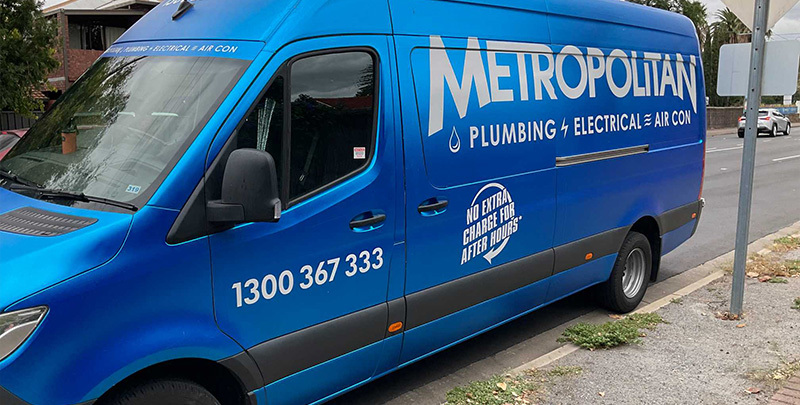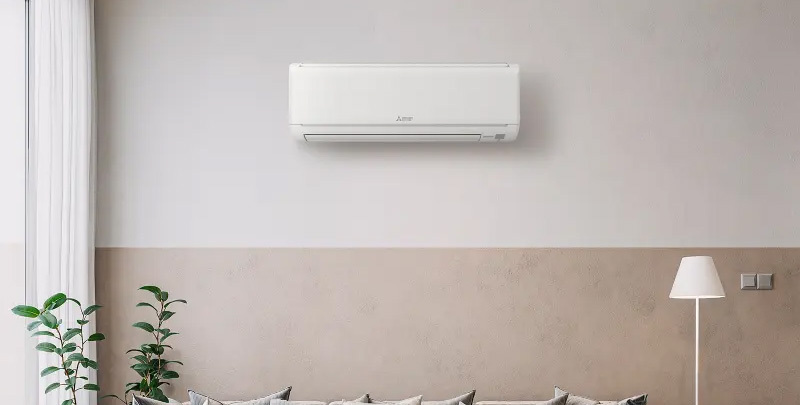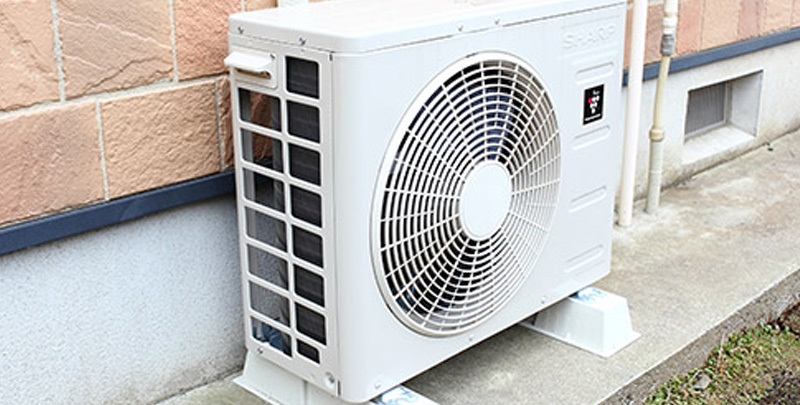
Why You Need a Professional for Split System Installation
Take control of your home’s climate with split-system air conditioners this summer and enjoy year-round comfort!
These energy-efficient systems are perfect for modern homes, eliminating hot summers and chilly winters. With their power, convenience, and reliability combination, why not make split-system air conditioners part of your living space?
Understanding Split System Air Conditioners
Split-system air conditioners have become highly popular because of their silent and efficient cooling and heating abilities. These versatile window systems can work for different room sizes, from little bedrooms to wide open-plan areas, delivering a comfortable climate.
But what sets them apart? We will explain by example how the components come together, resulting in ultimate comfortability when discussing split systems or any other type of air conditioning unit and allowing users to enjoy coolness and warmth via powerful airflow created by merging multiple elements related to that particular unit’s engineering design.
Components of a Split System
A split-system air conditioner is an efficient and simple way to cool your home, with two main components: the indoor unit (evaporator) and the outdoor unit (condenser). The evaporator can be wall-mounted on a wall or ceiling, while the condenser is usually located away from view outside your house.
These units are connected via refrigeration tubing, allowing heat transfer between them. There’s also a remote control for easy access to authorities at all times! Combined with these different parts, it creates an ideal system that keeps you comfortable throughout any season.
How Split Systems Work
Split systems are highly energy-efficient and provide year-round comfort. They transfer heat between indoor and outdoor units to cool or warm up a room, depending on what is desired.
During cooling mode, the inside team absorbs warmth from your area while passing it on to its outside counterpart, dissipating it into the atmosphere. Conversely, in heating mode, exterior components acquire thermal energy from the air and then transport it indoors, releasing it as warmth for your living space.
Advantages of Split Systems
Split systems have a plethora of benefits over other forms of air conditioning. They are highly energy-savvy, helping reduce electricity expenditure while maintaining the desired temperature indoors. These units operate with minimal noise pollution as their noisy components are found in the external team, making room for a tranquil indoor ambience.
You can place split systems almost anywhere because of flexible installation alternatives. You must comply with local bylaws and not disturb your neighbours.
Choosing the Right Split-System Air Conditioner for Your Home
You should consider several factors when purchasing the perfect split system for your home. Capacity is crucial, and you should assess models from different brands while considering installation needs.
To assist with making an educated choice on this matter, we will cover all these elements closely here today.
- Determining the right capacity range: Selecting the proper cooling capacity for your split system and the right air conditioner size is a significant factor in securing optimal functioning. Room size, climate, and insulation are essential when determining the suitable air conditioner size. It would be best to get about 1–1.5 kW of cooling power per 10 square metre area to cool down effectively. For instance, if you aim to chill a space that measures 20m² or smaller, then usually it’s best suited with a small-capacity AC that has a range of between 2 kW and 3 kW, as this usually provides just enough air conditioning to suit the needs of such areas.
- Installation considerations: Installing a split-system air conditioner is vital for its effectiveness and durability. Recruit an experienced professional to ensure the correct setup, taking into account details such as the wall or ceiling type where the appliance will hang, the size of the unit, and space from the exterior device.
Should you dwell in leased accommodation, please verify if there are any regulations on installing these types of systems with your landlord or building manager before proceeding.

Energy Efficiency and Running Costs
Regarding maintaining energy efficiency, split-system air conditioners are among the most important for homeowners. The Zoned Energy Rating Label provides specific information about their performance capabilities to inform a more knowledgeable choice when selecting these units.
We’ll explain in depth how this label works and what data you can use regarding air conditioning systems’ effectiveness and power consumption levels.
- Zoned Energy Rating Label: The Zoned Energy Rating Label rates energy efficiency for both cooling and heating functions based on the specific climate zone where the unit is installed. This label helps you compare air conditioner models to make a wiser choice. A split-system AC with an impressive rating could result in lower running costs while being more eco-friendly!
- Tips for maximising efficiency: To optimise the functioning of your split-system air conditioner, you must first choose a suitable capacity. An oversized unit runs shorter cycles frequently to hit the set temperature. It can lead to inefficiency and an increase in energy costs.
Regular maintenance, such as cleaning or replacing filters, maintains optimal performance levels for your appliance, so it uses less power when working efficiently. To achieve additional cost-saving measures, consider investing in a smart thermostat.
Automating temperature settings ensures you do not use excessive energy while maintaining comfortable winter living conditions inside buildings with indoor air conditioning units.
Additional Features of Split-System Air Conditioners
Split-system air conditioners offer more than just heating and cooling. They boast additional functions such as purifying the atmosphere, Wi-Fi control capabilities, and reverse cycle performance for an improved experience for homeowners.
To better understand how these features can benefit you, let’s examine them individually!
Air conditioning systems have been upgraded with air cleaning mechanisms while providing remote manipulation via Wi-Fi connection, thus enabling one to comfortably change temperature settings from afar, apart from having access to both cooling and heating options in a single unit at any time through reversing cycles when necessary.
- Air purification: Split-system air conditioners can help improve indoor air quality by filtering out dust, pollen, and other particles from the circulated air. In some models, filters enhance purification and provide an advantage to allergy sufferers. It is essential not to replace any of these parts using aftermarket products, as this could affect performance negatively or even cause damage and render your warranty voidable.
- Wi-Fi control: Wi-Fi control offers a practical and convenient way to manage your air conditioner. You can use this remote feature on any device, even when away from home. Simply adjust the temperature settings as needed and achieve potential energy savings! This technology also ensures that your house remains comfortable yet cost-effective for energy usage all day. With Wi-Fi connectivity, it assures you of improved convenience while simultaneously helping reduce consumption costs.
- Reverse cycle split systems: Split-system air conditioners that use reverse-cycle technology are a great way to maintain comfort inside your home all year. Offering heating and cooling features, this air conditioning unit is an energy-efficient solution for creating the right temperature indoors, regardless of the season. Investing in a powerful but efficient inverse cycling system can reap numerous benefits, such as ongoing lower bills while enjoying climate control within your living space anytime throughout the year!

Benefits of Hiring Professionals for Split System Airconditioner Installation
- The complexity of split system installation: Split system installation is different from your run-of-the-mill DIY project. It involves a combination of technical expertise, electrical work, and refrigeration knowledge. These units consist of two main components: indoor and outdoor, connected by refrigerant lines and electrical wiring. Typically, people install the indoor unit by drilling holes in walls, setting up mounting brackets, and correctly positioning the team to ensure optimal airflow. On the other hand, the outdoor unit demands meticulous attention to detail regarding proper placement, electrical connections, and refrigerant line installation. It isn’t a task for the faint of heart or the inexperienced.
- Safety first – electrical and refrigerant handling: Safety is one of the most critical aspects of split system installation that DIY enthusiasts often underestimate. Both electrical work and refrigerant handling are involved in the process, posing significant risks when mishandled. Professionals are trained to handle these substances safely, preventing leaks that could lead to environmental damage and health risks.
- Ensuring energy efficiency: Energy efficiency is a significant selling point for split system air conditioners. When correctly installed, these units can provide substantial long-term energy savings. A professional installer knows precisely how to set up the system for optimal efficiency. The correct placement of the indoor and outdoor units and proper insulation of refrigerant lines ensure that the system doesn’t have to work harder than necessary. It translates to lower energy bills and reduced environmental impact.
- Warranty protection: A manufacturer’s warranty likely covers your split system for a specified period, but it often includes a crucial condition: a certified professional must perform the installation. The DIY route may void your warranty, leaving you vulnerable to the cost of repairs or replacement because manufacturers require professional installation to ensure the unit is set up correctly and according to their specifications.
- Compliance with local codes and regulations: Building codes and regulations vary from one location to another. What may be acceptable in one area could be entirely against the law in another. Professional installers are well-versed in local codes and regulations, ensuring your installation complies with all requirements. Professionals ensure your split system’s correct, safe, and legal installation, taking the guesswork out of the equation.
- Avoiding common DIY mistakes: The DIY route is fraught with common mistakes that can plague your split system’s performance. These errors often include improper sizing of the unit, incorrect refrigerant charge, poor insulation, and haphazard electrical work. Professional installers have the experience to avoid these pitfalls. They perform load calculations to determine the right unit size for your space, ensure the refrigerant charge is precise, and meticulously insulate refrigerant lines to prevent heat loss. Their attention to detail can make a difference in your system’s performance.
- The convenience of professional installation: Hiring a professional for your split system installation offers unparalleled convenience. These experts handle all aspects of the installation process, from assessing your space and recommending a suitable unit to securing all necessary permits (if required) and ensuring a seamless installation process.
Choosing professionals means you can dedicate valuable time and effort to the installation. Instead, you can sit back, relax, and let the experts take care of everything, saving you the hassle and stress of a DIY project.
Install Your Split System Airconditioner Now
Split-system air conditioners are a great way to keep the home’s indoor atmosphere comfortable while being cost-effective and energy-efficient. An array of models with different features is available so that homeowners can select the perfect one depending on capacity, efficiency level, and installation requirements.
This type of air conditioning offers year-round temperature control in any household environment without sacrificing comfort or money.
In conclusion, investing in a split-system air conditioner is excellent and can help you prioritise professional installation. The complexities, safety risks, energy efficiency benefits, warranty protection, legal compliance, and long-term advantages all underscore the importance of relying on experts for this task.
Don’t compromise on your comfort or the performance of your split system by attempting a DIY installation. Instead, choose the convenience, expertise, and peace of mind of hiring a professional. Make the smart choice today for a comfortable and efficient tomorrow.
Please note: This information is provided for advice purposes only. Regulations differ from state to state, so please consult your local authorities or an industry professional before proceeding with any work. See our Terms & Conditions here.
Published: 14 November 2023